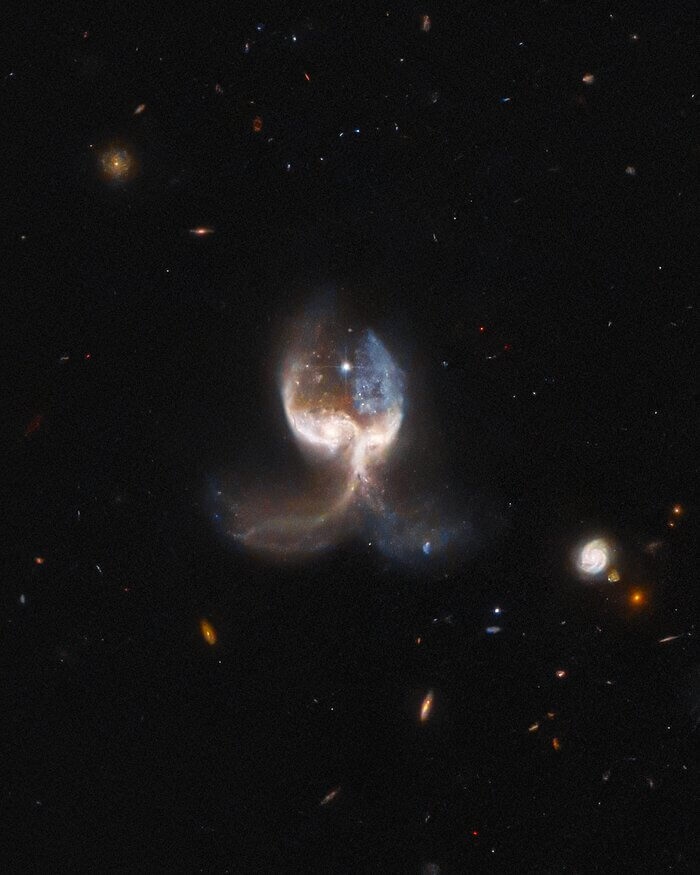
(Credit: ESA/Hubble & NASA, W. Keel. Acknowledgement: J. Schmidt)
BALTIMORE, Md. — Scientists monitoring NASA's Hubble Space Telescope are calling it “Angel Wing.” In actuality, the famous space probe has sent back a mesmerizing image of two merging galaxies which happen to look like an angel with its wings spread out.
Researchers with NASA and the European Space Agency (ESA) say these galaxies are colliding in the VV689 system. Unlike galaxies which merely look like they're overlapping from our point of view on Earth, scientists say these two really are in the middle of a galactic collision. Moreover, these two galaxies have created an almost perfect symmetrical pattern, giving viewers here on Earth an image that really looks like two giant wings in deep space.

The new images come from Hubble's Galaxy Zoo citizen science project. The crowdsourced project relies on hundreds of thousands of volunteers who classify galaxies, helping astronomers sift through the overwhelming amount of data coming in from space telescopes.
Why are these galaxies crashing into each other?
The answer is pretty simple — gravity. The gravitational pull of these massive star clusters draws the two closer together until they both enter an increasingly tight orbit around each other. Eventually, they form one even larger galaxy.
Surprisingly, scientists believe that very few stars and other celestial objects actually crash into each other during this process. However, the merger of these gigantic objects causes massive gravitational shockwaves to form.
Astronomers suspect that the Milky Way galaxy itself has been involved in galaxy collisions as it formed. By learning more about what happens when galaxies like the ones in the VV689 system collide, scientists may discover new clues about the evolution of our galaxy.










